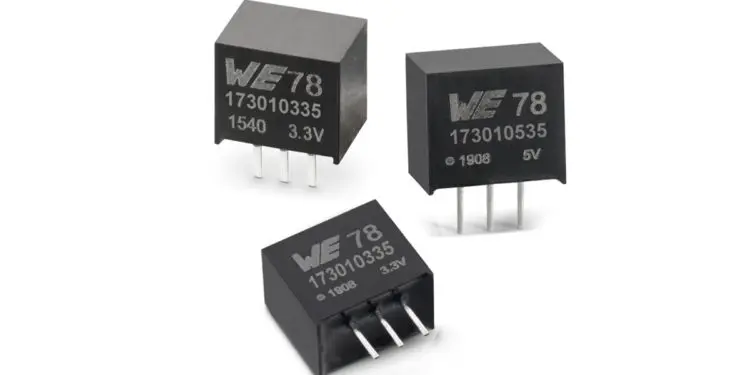Würth Elektronik’s L78x-compatible Power Module Meets the Requirements of the 24 V Industrial Voltage Network
A new generation of MagI³C FDSM power modules: The power modules with fixed 3.3 or 5 V output voltages are now also available with an input voltage of 36 V, following on from versions with maximum input voltages of 28 and 42 V. The components in a SIP-3 package represent cost-effective solutions to meet the requirements for the transient capability of a 24 V industrial voltage network. The new modules operate from 6 to 36 V VIN and generate a fixed output voltage of 3.3 or 5 V at a current of up to 1 A.
The FDSM series of MagI³C power modules are fully integrated DC/DC voltage converters with fixed output voltage. The modules comprise the power stage, controller, inductors, and effective operational input and output capacitors. They also come with thermal overload and short circuit protection.
No external components are required for operation. The workload of circuit design is thus reduced to a minimum. This allows new applications to be brought to market quickly with very low development costs. The standard THT housing for easy mounting is pin-compatible with the L78x linear controllers.
The radiated and line-bound interference of the modules is below the limit set by the EMC standard EN55032/CISPR32 Class B. They were measured with verified filter combinations on the 17800FDSM EVAL board, which, like the power modules, is available from stock.





























